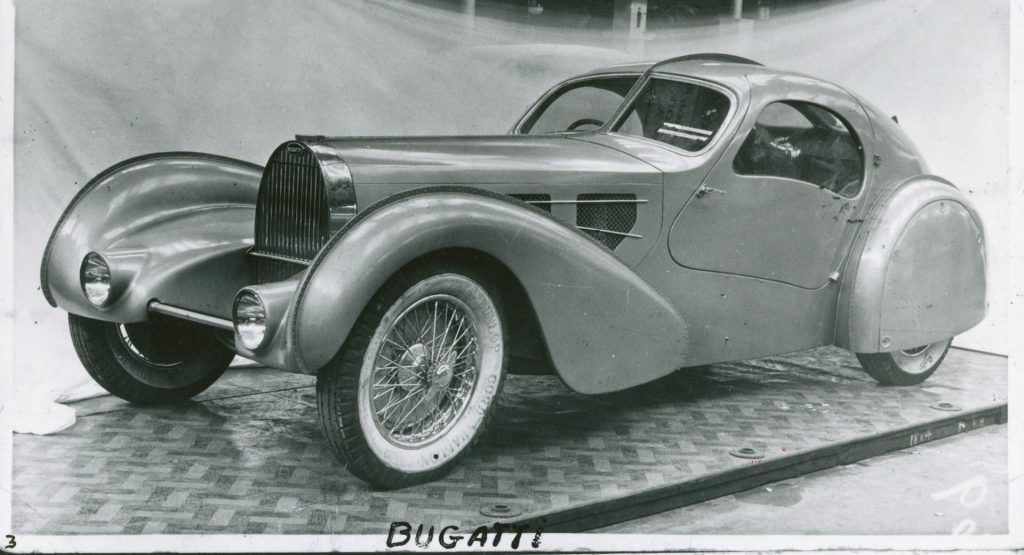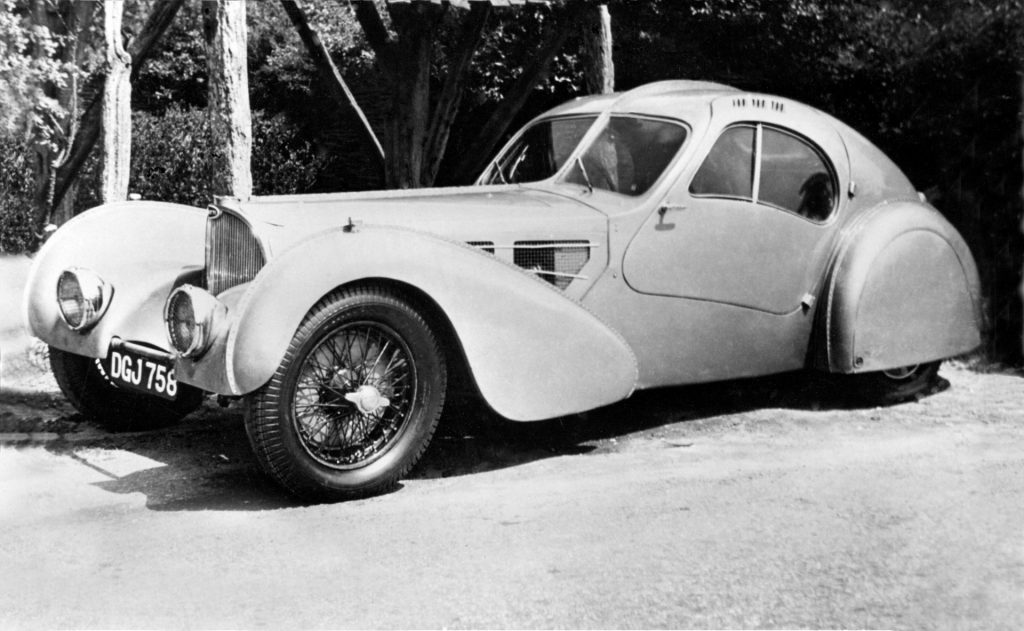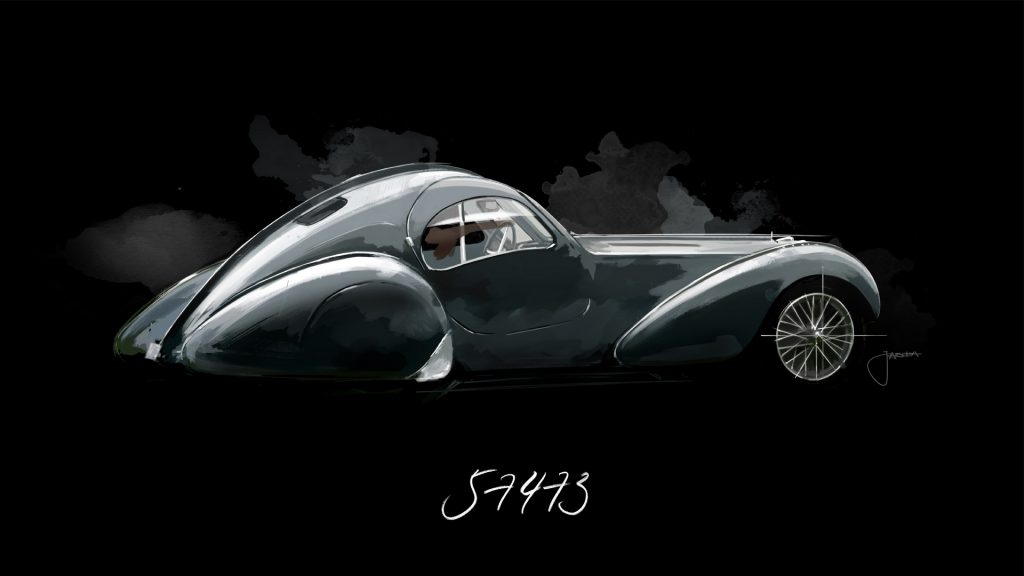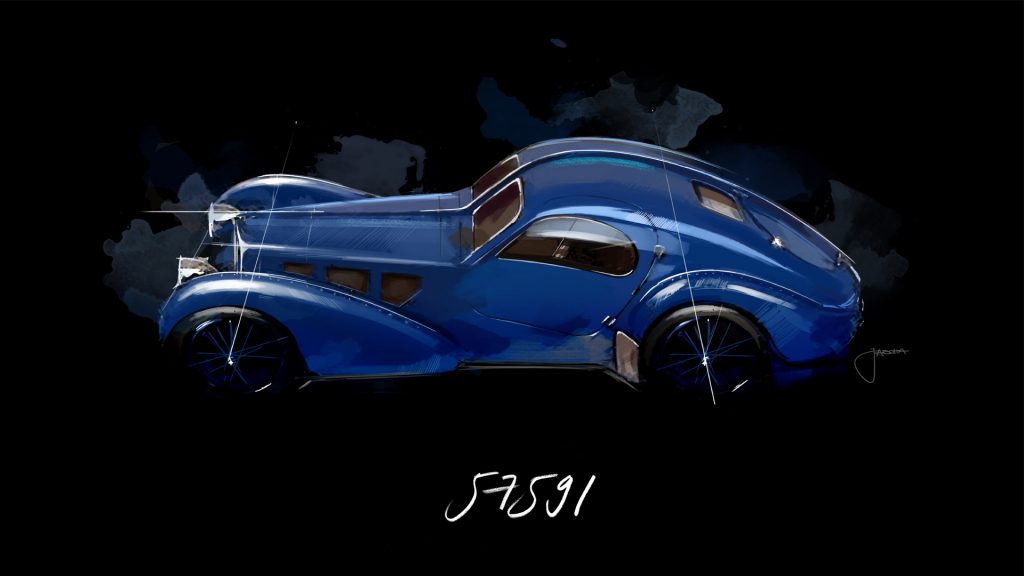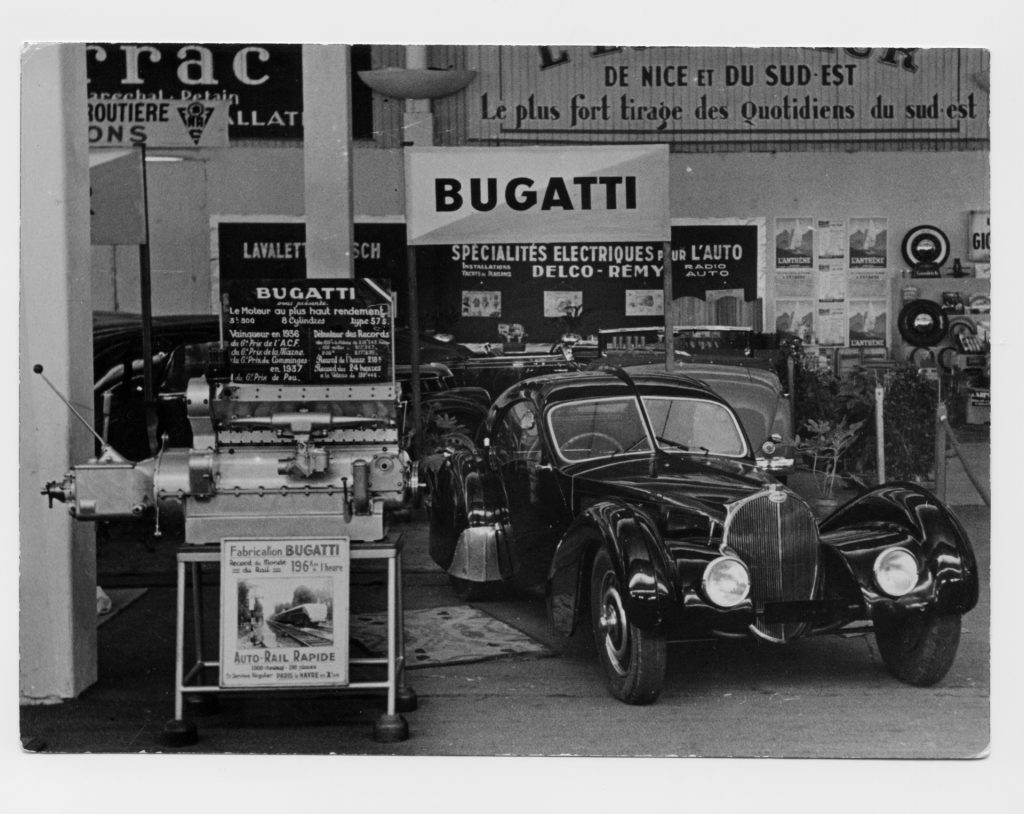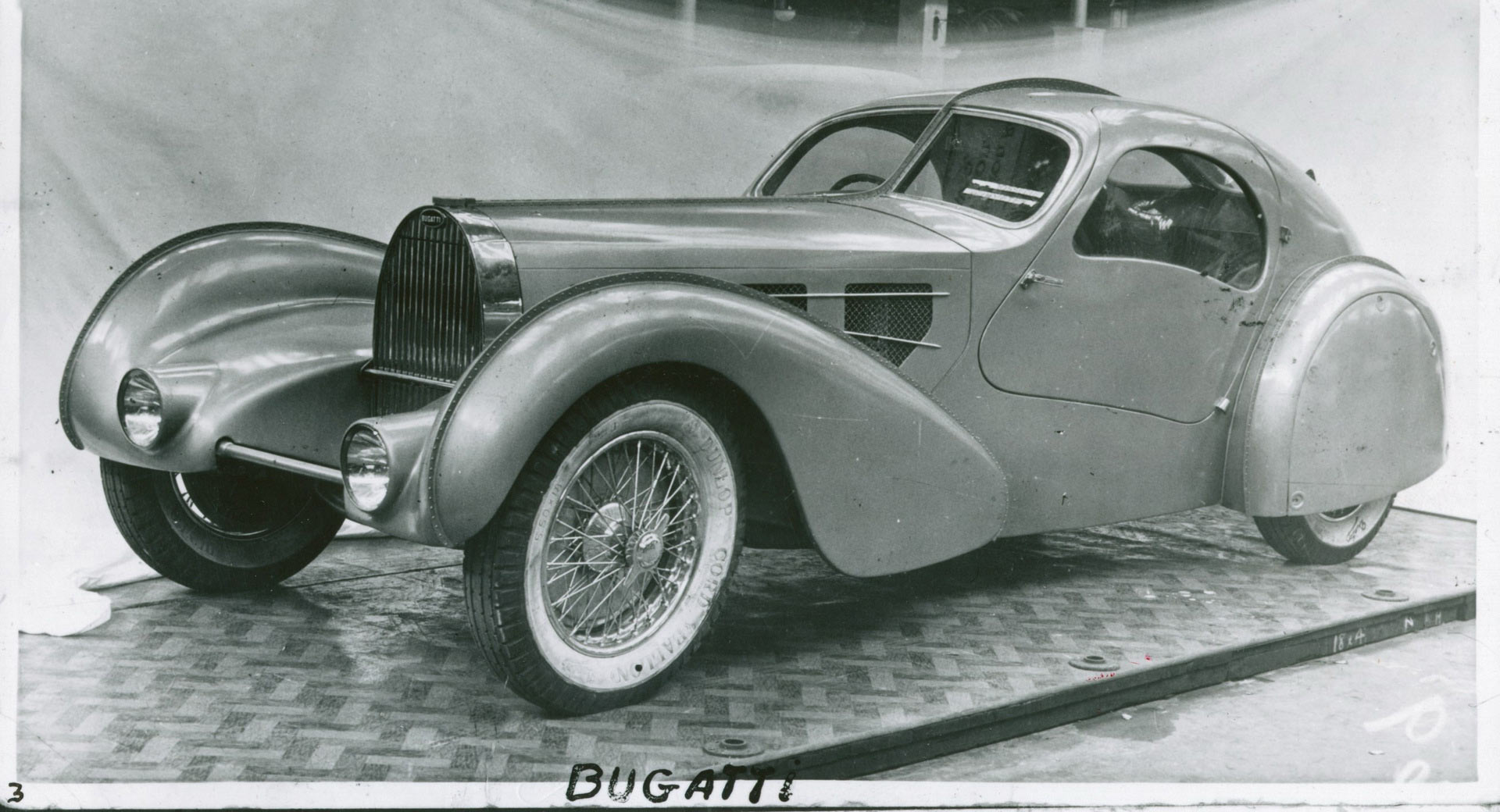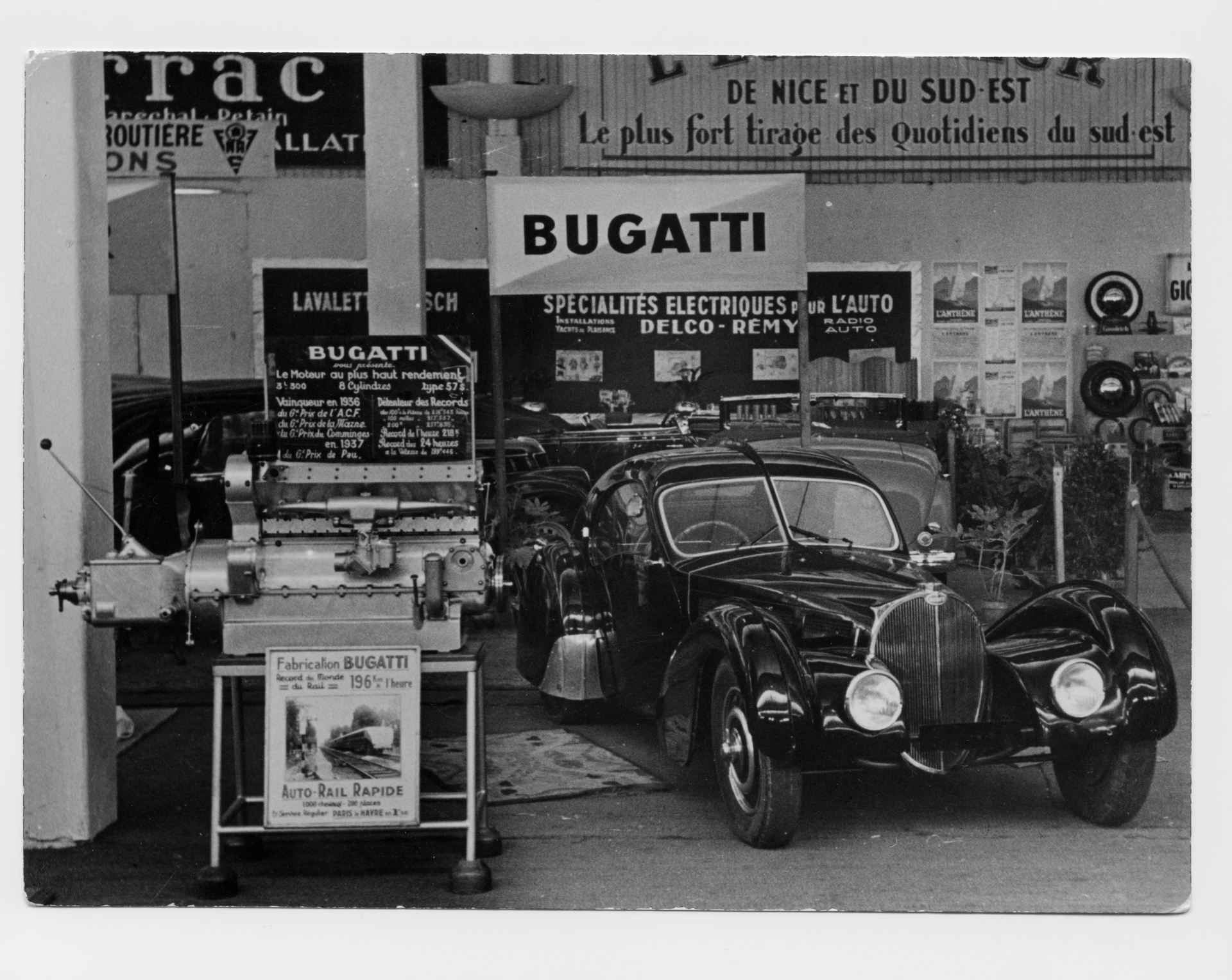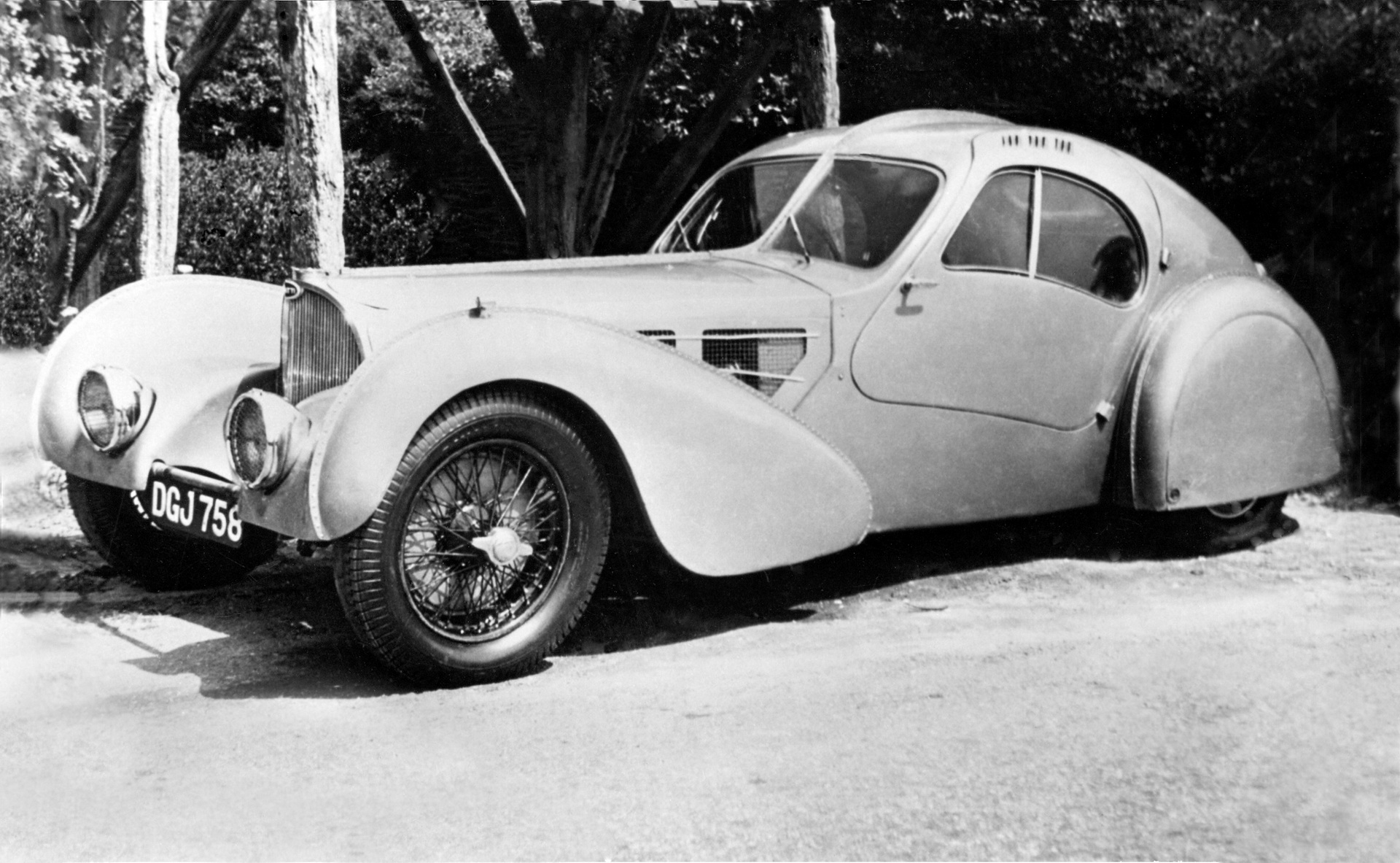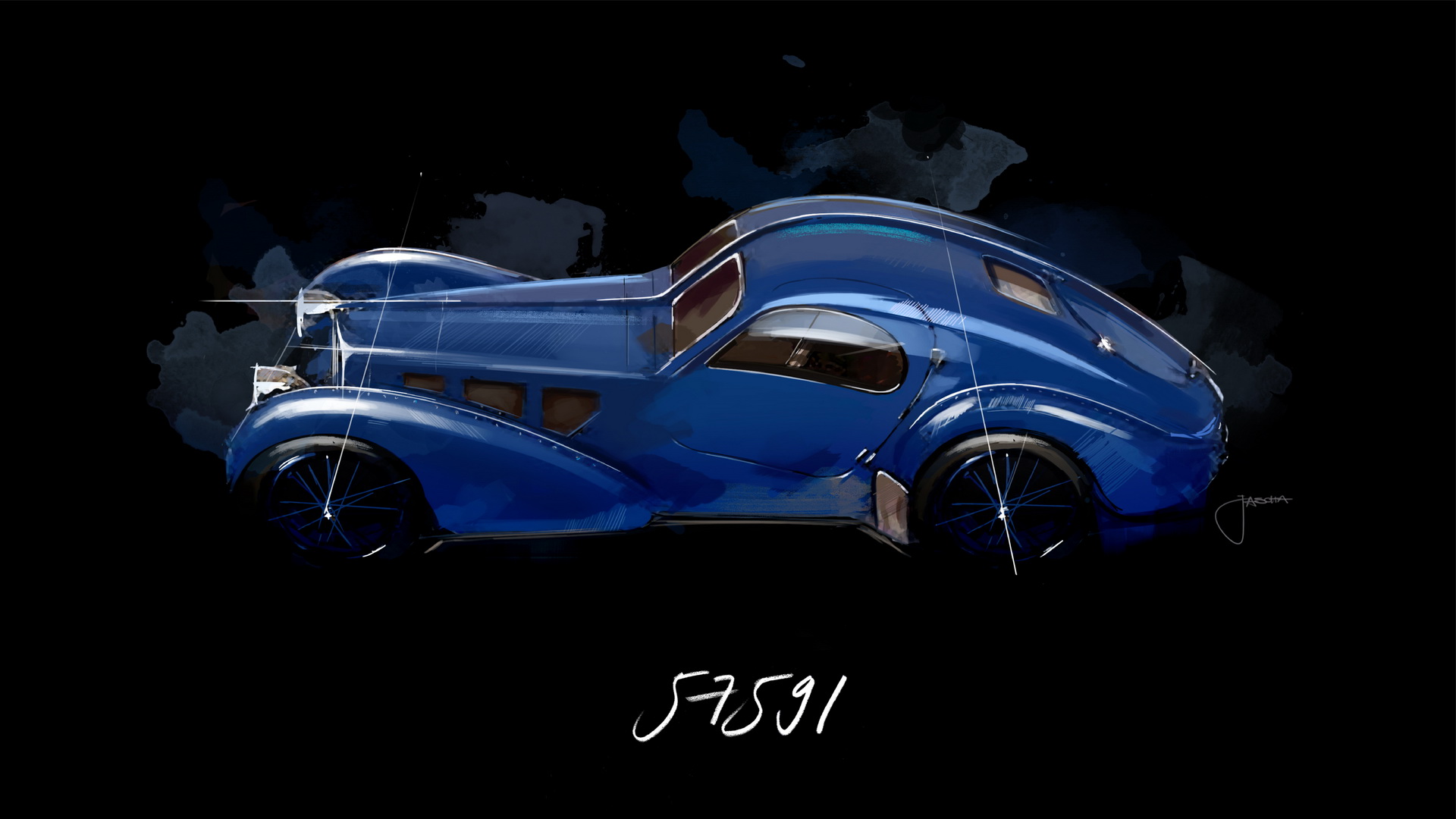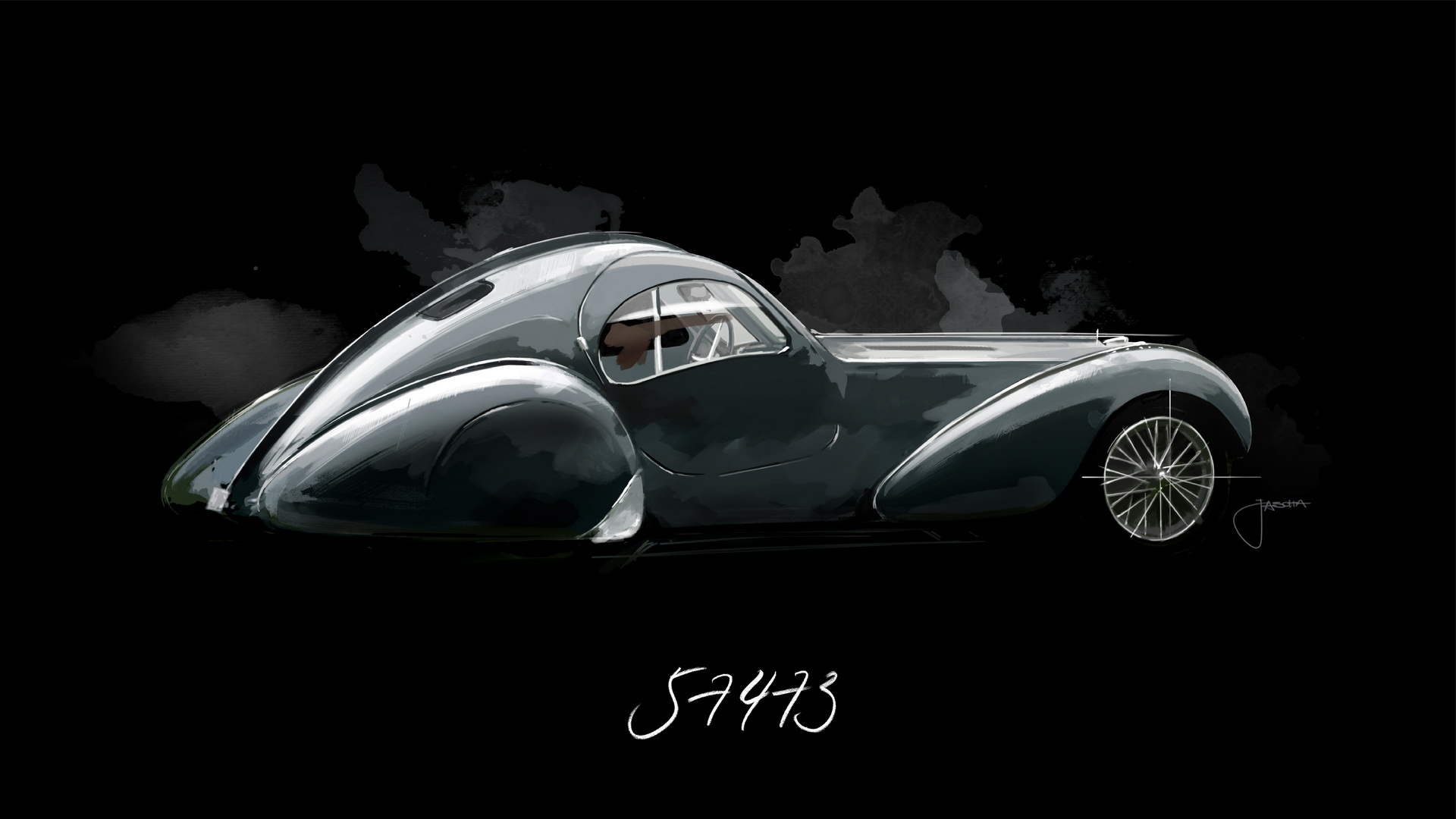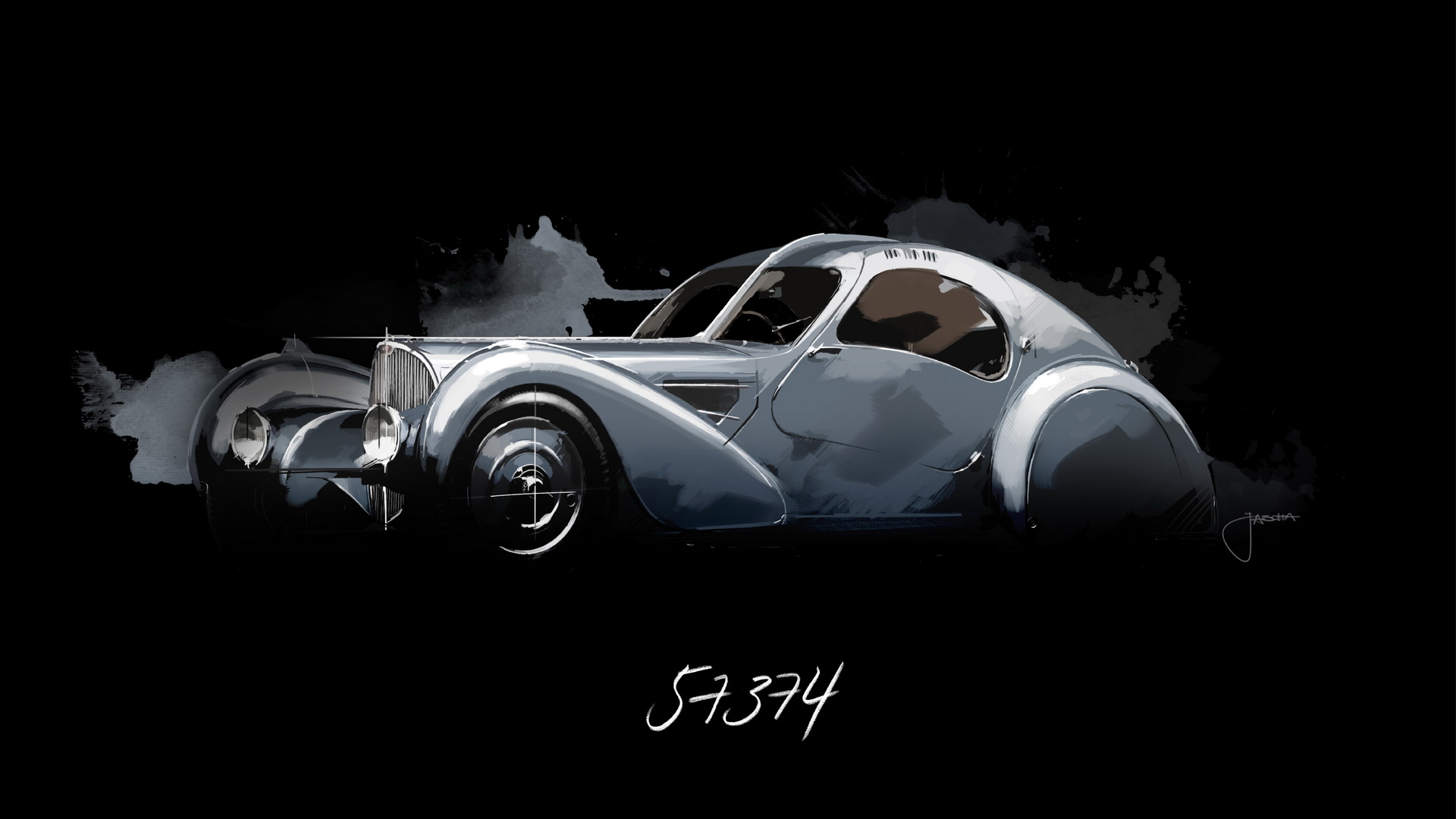The Type 57 SC Atlantic is perhaps the greatest Bugatti in the history of the brand – and one of the most iconic cars ever. Only four examples were made between 1936 and 1938, with three of them still around, making it perhaps the most valuable car in the world.
Ettore Bugatti’s son developed the Type 57 as a platform, which spawned several variants including the Galibier (four-door saloon), Stelvio (convertible), Ventoux (two-door saloon) and Atalante (coupé). When production stopped in 1940, Bugatti had produced around 800 Type 57 models, making it one of the most popular Bugattis.
However the Atlantic was different. The bodywork was developed from the unique Aérolithe prototype. The Aérolithe, chassis number 57104, had bodywork made out of Electron, an alloy of 90 percent magnesium and 10 percent aluminum. Thanks to the magnesium’s flammable nature, Jean Bugatti couldn’t weld the body panels together, resulting in the famous dorsal seam.
The Type 57 SC Atlantic kept the rivets on the dorsal seam, despite using aluminum panels. The doors continued into the roof for easier entry and exit to and from the low-slung coupe that measures just 3.7 meters in length.
The first two examples came with headlights integrated into the wings while the other two feature separate housings. Each one of the four cars came with their own unique detailing.“The Type 57 SC Atlantic is a design manifesto of Jean Bugatti. The breathtaking proportions of this masterpiece were simply unparalleled at the time and are still thrilling to the present day with their fascinating elegance,” says Achim Anscheidt, Director of Design at Bugatti.
Power came from a 3.3-liter straight-eight engine producing up to 200hp, making the Atlantic capable of speeds over 200km/h (124mph) during a period where horse-drawn carts were still used on most roads.
The first model was built in 1936 for British banker Victor Rothschild, finished in grey-blue. Chassis number 57374 is now known as the “Rothschild Atlantic” and was originally delivered without a supercharger.
The third car is the “Holzschuh Atlantic”, chassis number 57473, delivered to Jacques Holzschuh of France in October 1936. The second owner of the car was killed during an accident on a level crossing, leaving the Atlantic completely destroyed. Decades later, the remains became a subject of a complex restoration, which didn’t include the original engine as it was deemed too far gone to be saved.
The fourth and final Atlantic, chassis number 57591, is the “Pope Atlantic”. It was completed in May 1938 for Briton R.B.Pope. Its current owner is none other than fashion designer Ralph Lauren.
Jean Bugatti kept the second Atlantic for himself. The “La Voiture Noire” (the black car), chassis number 57453, was driven only by him or a few selected friends. Bugatti used it as a display car for photos in brochures and as a demonstrator in international motor shows up until 1938, where the car simply vanished. No one knows exactly what happened to it, if Jean Bugatti sold it or whether it was moved to a safer location when the Germans invaded Alsace.
To this day, the second Atlantic has not been found, making its disappearance one of the greatest mysteries. With an estimated value of over 100 million euros ($113 million), the lost Type 57 SC Atlantic is the true king of the automobile world.
Bugatti is reportedly working on something truly special for the upcoming Geneva Motor Show, so maybe it felt the need to remind us its greater achievement before the next one? Food for thought.








